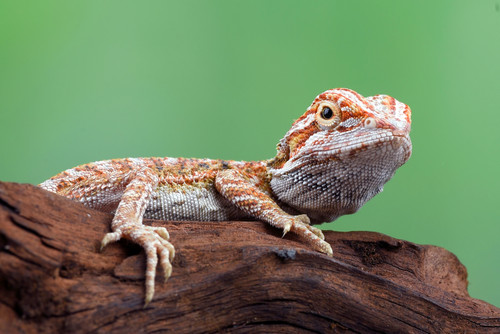Beginners Guide to Owning - Bearded Dragons
Posted by BioSupplies on 12th Jul 2024
Bearded Dragons (Pogona vitticeps) are one of the most popular reptile pets, known for their friendly demeanor and manageable care requirements. If you’re considering bringing one into your home, this beginner’s guide will help you understand the essentials of bearded dragon care.
Why Choose a Bearded Dragon?
Bearded Dragons are native to Australia and are known for their calm and curious nature. They are relatively easy to care for, making them an excellent choice for beginners. Bearded Dragons can grow up to 60 centimeters in length and can live for 10-15 years with proper care.
Setting Up the Enclosure
Size and Type
A 120-litre tank is the minimum size for a juvenile, but an adult bearded dragon will need at least a 250-lirer tank. A glass terrarium with a secure mesh lid is ideal.
Heating and Lighting
Bearded Dragons require a temperature gradient in their enclosure. The basking area should be around 36-40°C, while the cooler side should be between 22-26°C. Use a basking lamp and a ceramic heat emitter to achieve these temperatures.
Bearded Dragons also need UVB lighting to synthesize vitamin D3 and absorb calcium properly. A UVB bulb should be placed in the enclosure and replaced every four to six months.
Substrate
Reptile carpet or a sand mat are good substrate choices for bearded dragons. Avoid small loose substrates like wood chips, as these can cause impaction if ingested.
Decor and Hides
Provide rocks, branches, and hides to mimic their natural environment. These items will give your bearded dragon places to climb, bask, and feel secure.
Feeding Your Bearded Dragon
Diet
Bearded Dragons are omnivores and require a balanced diet of insects and vegetables. Juveniles should have a diet consisting of 80% insects (crickets, woodies or bsf) and 20% vegetables (kale, peas). Adults should have a diet of 20% insects and 80% vegetables.
Feeding Schedule
Feed juveniles 2-3 times a day, and adults once a day. Dust insects with calcium powder to ensure your bearded dragon gets enough calcium.
Hydration
Provide a shallow water dish and mist your bearded dragon’s enclosure lightly. Bearded Dragons may also enjoy a soak in shallow, warm water to stay hydrated.
Handling and Temperament
Bearded Dragons are known for their docile and friendly nature, making them easy to handle. Start with short handling sessions to get your dragon accustomed to you. Always support their body and avoid sudden movements. Regular handling helps build trust and reduces stress.
Health and Common Issues
Shedding
Bearded Dragons shed their skin as they grow. Ensure proper humidity levels and provide rough surfaces in the enclosure to help with the shedding process.
Common Health Issues
Watch for signs of metabolic bone disease, such as lethargy or deformities, which can result from insufficient calcium or UVB light. Respiratory infections, parasites, and impaction are other common issues. If you notice any signs of illness, consult a reptile veterinarian promptly.
Legal Considerations
Before bringing home a Bearded Dragon, check the legal requirements in your area. Some regions may require permits or have specific regulations regarding the ownership of certain reptile species.
Owning a Bearded Dragon can be a rewarding experience. Their friendly nature, manageable size, and relatively simple care requirements make them an excellent choice for first-time reptile owners. With the right setup, diet, and handling, your Bearded Dragon can thrive and bring you joy for many years. Remember to do thorough research and seek advice from experienced reptile keepers to ensure you provide the best care for your new pet.
Welcome to the wonderful world of Bearded Dragon ownership!

